St Teilo's
A selection of images from St Teilo's Church
Decoration
The screen from the west door.
The carpenter’s signature, and the date the church was opened. It reads ‘XIIII Oct A.D. MMVII RJS fecit’. Translated from Latin, this means ‘14 October 2007 A.D. RJS (Ray J. Smith) made this’.
This is a collection of all the so-called 'Passion', or Easter symbols. They tell the story of Jesus Christ's crucifixion, showing only the tools used.
Aspects of daily life were reflected everywhere in this building in Tudor times. In our interpretation, we have added some local characters of our own. Here's Ray, the carpenter, again, surrounded by his tools!
This is also a corrupted Pagan symbol. The hare, as symbol of fertility, is turned into a Trinity symbol. Their ears are all joined and the simple hare becomes a symbol of resurrection.
Worshipper's lives in Tudor times were strongly linked to the natural world. As a consequence, symbols like the green man — the Pagan spirit of the forest — were acceptable in church.
In the same way medieval church had many different functions, it also had many different messages and symbols conveyed through the building. This is a royal symbol, the Tudor Rose, bringing together the York and Lancaster roses.
The apostles were painted by an artist called Fleur Kelly. She worked with our own historic painters to decorate the rest of the screen. The three saints hold an object in their hands, so that we can tell who they are.
Philip was crucified for his beliefs, so he holds a cross. John was made to drink poisoned wine — and lived — so he holds a cup with a snake in it. Peter holds the keys to the gates of heaven, so he holds a key.
Teilo's life is depicted in great detail on the loft. You can view it in full by clicking
here.
This panel shows the story of Teilo escaping from hounds, after trying to establish a community on the Count's land in Dol, Brittany.
A closer view shows us how much is displayed on the Loft, too. Here are four of the twelve Apostles — Saints held in special view by Christians for their work spreading Jesus' message. Underneath is Teilo's life story, carved into oak.
A closer look at the screen and loft. These fixtures would have been common all over Wales and England until the mid 16th century. The screen was built to separate the ordinary people from the priests who held the service. The loft on top was used for display, rather than as a minstrel's gallery or choir loft.
Here's Ray Smith, Head Carpenter at our Historic Buildings unit, standing in front of the screen he made. The tools in his hand are what were used to make it — a hammer and chisels.
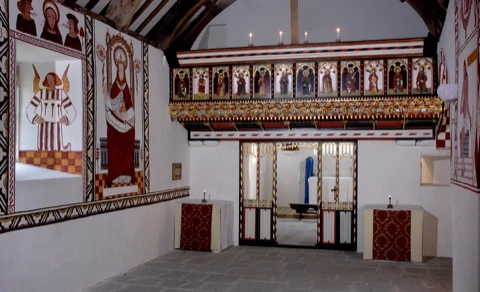
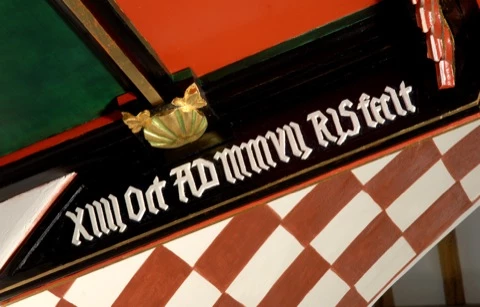
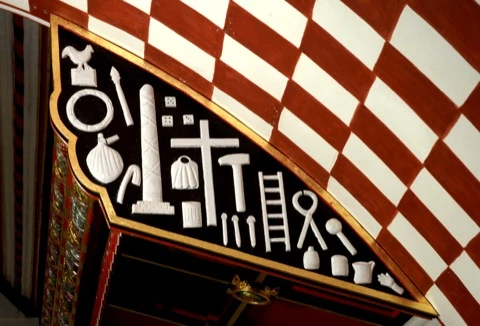
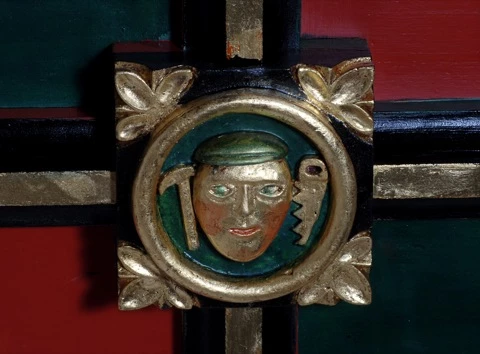
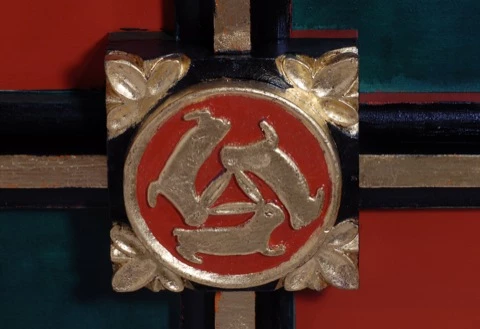
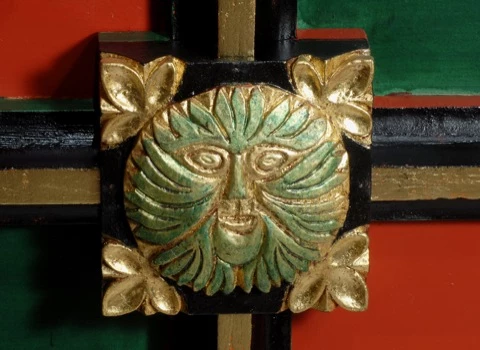
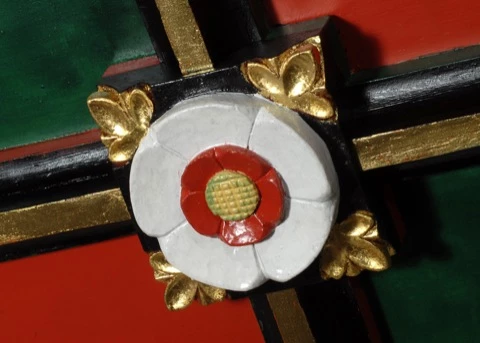
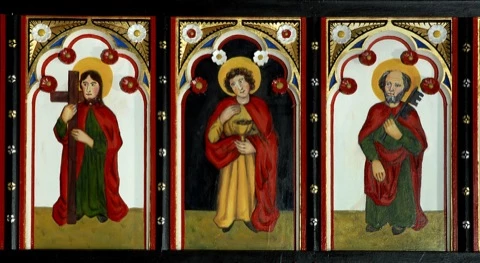

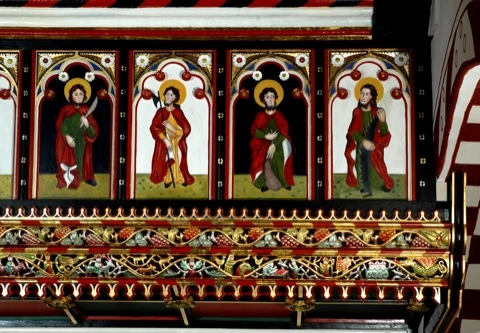
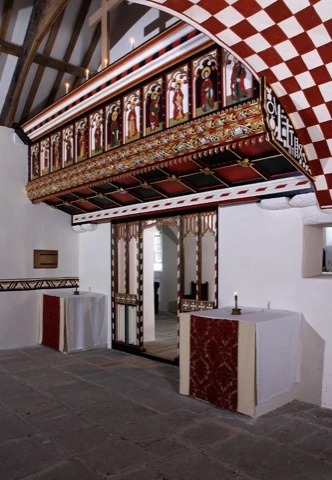
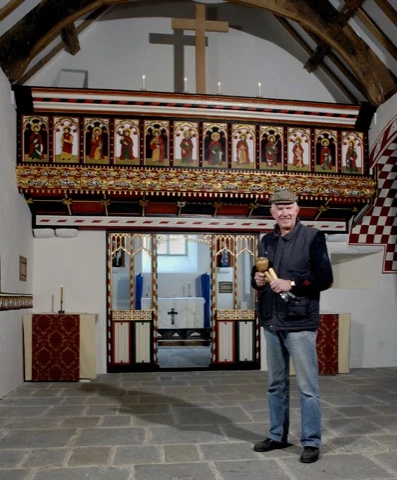
Comments - (1)
Has this Church been mentioned on a recent television programme recently? I would be most grateful for a reply-thank you.